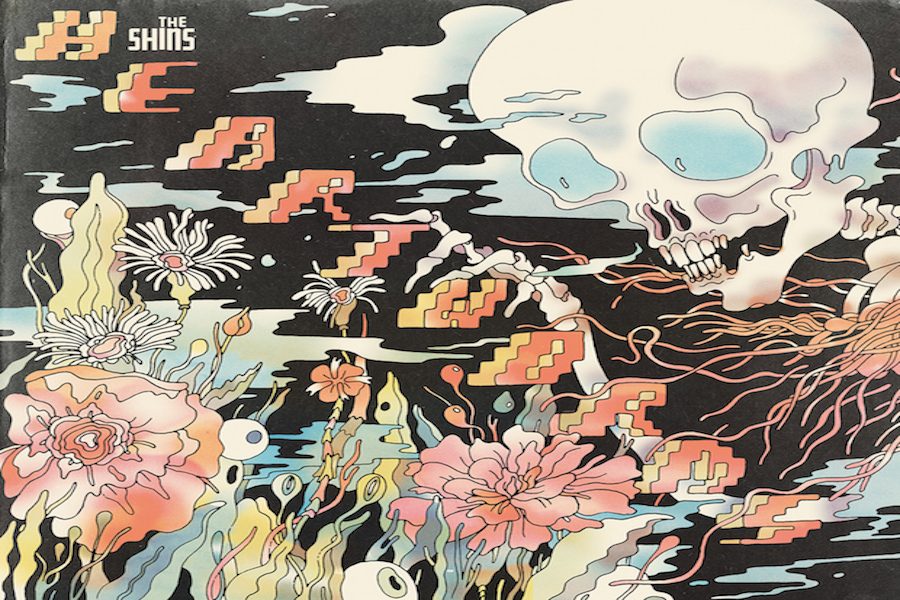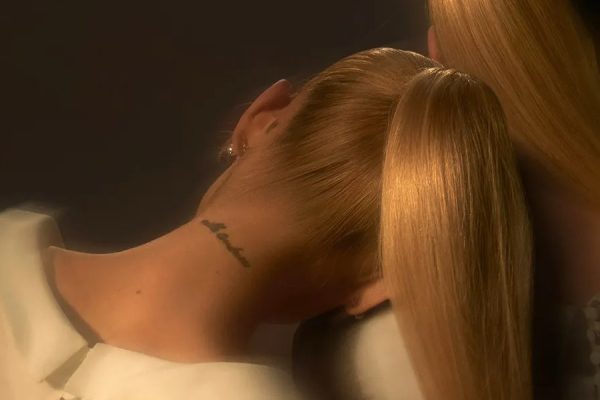The Shins take on the modern style with Heartworms
April 4, 2017
If one were to approach any stranger in the tri-state area with seventeen to twenty-five years on his or her back, and utter a simple question about The Shins, he would be almost immediately greeted by a distant gaze of nostalgia. From tattooed Greenwich village hipsters, to Columbia University graduates, merely a hum of Simple Song or a whistle of Phantom Limb will undoubtedly bring the recipient of these stray sounds to a different part of his mind; some reflection arriving hand-in-hand with a grin and leaning back of the head.
Perhaps the logic behind the Shins’ nostalgic sound has to do with the fact that for the last five years, they have been on a hiatus following the 2012 release of Port of Morrow. Either that or it is the whimsical vocals, chromatic synth riffs, or catchy bass lines that give the Shins their iconic not-so-pop, not-so-rock sound.
The March 10th release of Heartworms, the Portland band’s fifth studio-recorded album, marks a new era in the evolution of alternative music. From the Kings of Leon emerging into youth culture in the late 2000’s and early 2010’s, to pop groups like Mumford and Sons, Sufjan Stevens, the modern pseudo-genre “alternative” encapsulates everything from folk to electronic dance music.
The Shins rightfully claimed their place in the youth counterculture, combining 60’s-influenced psychedelic pop with some of the grunge, pop, folk, and punk of today’s popular cornacopia of genres.
Ever since the release of Port of Morrow in 2012; however, Vance Joy had concurred all radio stations and teen bonfire parties with his hit Riptide, Nathaniel Rateliff had brought the wild New Orleans style to the scene with his brass-saturated self-titled album Nathaniel Rateliff and the Nightsweats, and perhaps both significantly, satan himself was given five more souls to conjure when the iconic folk group Mumford and Sons plugged in, beginning their career as an alternative rock band.
With such prominent change to the modern musical world, where might the old-school Shins fit? The answer: Everywhere.
Heartworms kicks off with a prominent pop bass line at the opening of “Name for You”, the first song on the A side, which includes a high vocal range, light backup guitar riffs, as well as a catchy pop chorus line, and random, trippy Beatles-style sound bits of birds and breezes throughout the verses. Along with this, a small, yet charming trumpet riff before each chorus adds to the upbeat, fun, and whimsical nature of the song. It lacks complexity, but does not try to be anything more than what it is: a great energy-filled jam-out song .
If there can be found one thorn on this rose of an album, it is a slight degradation in either the lyrical quality, or melodic harmony of tracks. For Shins fans who remember the beautifully jaded self-reflection depicted in “A Comet Appears” on Wincing the Night Away might be disappointed by a slight lack of lyrical profundity in Heartworms.
Despite experimentation in sound effects, styles, and keyboard use, The Shins relied more heavily on fun pop lyrics and pump-up chorus lines in this coming album, and as a result, did not necessarily utilize the same level of witty verse writing as they might have in the past.
Despite this, a decent level of introspective beauty can; however, be found in the fourth track on the A side, “Fantasy Island”, which, according to lead singer and songwriter, James Mercer, was based on his childhood anxieties moving to the United States from Germany. Interestingly though, Mercer combines feelings of isolation and sorrow from his childhood with his adult life to make his lyrics more relatable and perhaps more potent for listeners. The track opens up with a simple bass line similar to that of “Fortunate Son” by Creedence Clearwater Revival, and then utters the odd line:
“Long in tooth, olives and vermouth I dine like an aging pilot”.
A somewhat lyrically dull, but easygoing chorus then kicks in, cruelly placing his listener back in “pop mode” only to later in the song, give him but a tiny taste of Mercer’s former poetic style with the lines:
“All my life, compromised on wings of resignation
Big grey eyes staring from the sky
Am I humble enough now?”.
It is unlike The Shins to fluctuate styles with such a bipolarity in only one song, and such a change appears to have been brought on by the underlying reason for all of the differences between Heartworms and the band’s other albums: experimentation.
Like all artists, The Shins experiment with new styles, effects, and songwriting in their new album, which at times, makes Heartworms much more interesting overall, but at others, caused it to suffer.
On the fifth track of the A side, Mildenhall, for example, the band used pseudo country vocals, with hints of jazzy slow-swing in its instrumentation to produce a complex, groovy new sound. In others, such as Cherry Hearts, the band attempts to create some form of 1975-style electro-pop, only to compile superfluous stray sounds and simple drum beats onto a style of music which just would not collaborate.
Although Heartworms produces an occasional double take-worthy verse or riff, there is something about it which, despite its high quality, simply can not compare with Wincing the Night Away or even Port of Morrows.
While many tracks were sullied by experimental effects and vocals, Heartworms is still a refreshing and at times psychedelic masterpiece due to the fact that it still evokes a leaning back of the head, still has moments of clever lyricism, and with the right kind of ears, one might even notice that underneath all of the distracting influences and attempts at a new sound, it is still the good old Shins.
7/10

















